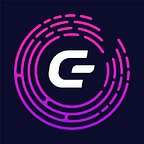Recently, Kaspa has gained much traction and popularity in the crypto community. Unfortunately, up to now, a good number of people still have not understood this project’s basic concept. This article will therefore explain everything you’d like to know about KASPA in a straightforward way. With that said, let’s get to it!
What is Kaspa?
Kaspa is a GHOSTDAG protocol-based proof of work project. GHOSTDAG, unlike traditional blockchains, does not neglect parallel blocks. Instead, it allows them to coexist & orders them in consensus. Essentially, Kaspa is the Nakamoto Consensus in its most basic form. The project has no central governance or business model. That means it is community-based, decentralized, and open-sourced.
The project was first conceptualized and implemented in 2016 by Yonatan Sompolinsky and Aviv Zohar. Through the GHOSTDAG protocol, the team envisioned and implemented a project to solve the scalability issues of proof-of-work-based projects. Like any other POW project, Kaspa guarantees safety with the advantage of faster block processing speed and adjustable block time and reward.
What are The Use Cases for Kaspa (Vision)
Instant ledger confirmation is critical for the user and developer experience, integration with other web applications, and fast transaction settlement. Kaspa achieves that by minimizing the consensus engine’s latency on transaction flow and user experience.
Furthermore, peripheral nodes help mitigate serious frontrunning and MEV threats. Therefore, we don’t have to worry about miners and trading bots trying to manipulate transactions and gain an unfair advantage over ordinary users. The sub-second block times allow for pre-trade privacy and stealth transactions, which protect users from such manipulations.
Kaspa’s base layer concentrates on developing into a rapid and scalable transaction sequencing (also known as proof-of-publication) engine. Therefore, the base consensus will only keep track of the state of payments. On the other hand, Layer Two operations will keep track of the more comprehensive and expressive form.
Another natural way that the Kaspa network seeks to address a timely issue for crypto projects and users is by providing a shared, scalable transaction sequencing layer, quicker settlement times, and stealth pre-trade transactions that protect against censoring miners and bootstrapping an ecosystem of cross-silo communication.
Can I Mine the Kaspa Cryptocurrency?
To participate in the Kaspa ecosystem, you can set up your mining node. The community has produced a GPU miner based on CUDA that allows you to earn tokens as rewards.
How Many Kaspa Wallets are there?
The Kaspa wallet is currently available in three different forms;
- The Kaspa Web Wallet
- Kaspa Desktop Wallet
- Kaspa Command Line Wallet
Conclusion
While GHOSTDAG is a pretty exciting protocol, implementation can be challenging. Therefore, Kaspa is not just another straightforward implementation of GHOSTDAG. A wide range of theoretical and engineering challenges had to be solved before we had a usable implementation within reach.
Nobody can predict the future, but I think there’s a non-zero chance that Kaspa could end up being the fastest, most reliable, and most resilient PoW blockchain (or blockDAG) ever created. Kaspa is definitely standing out in the market.
New to trading? Try crypto trading bots or copy trading
